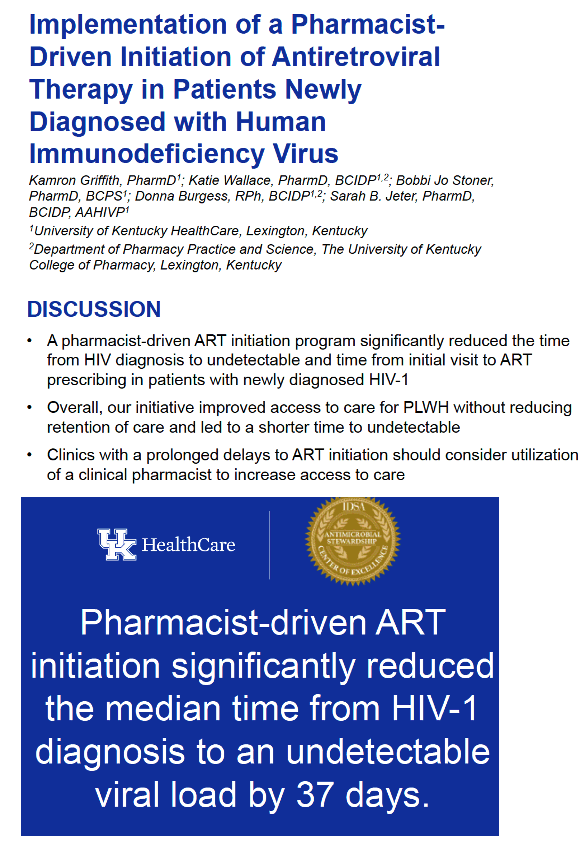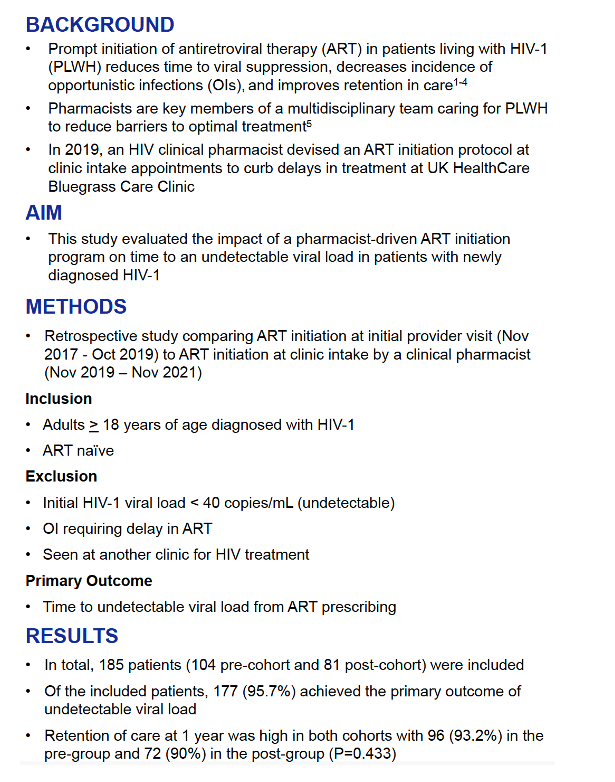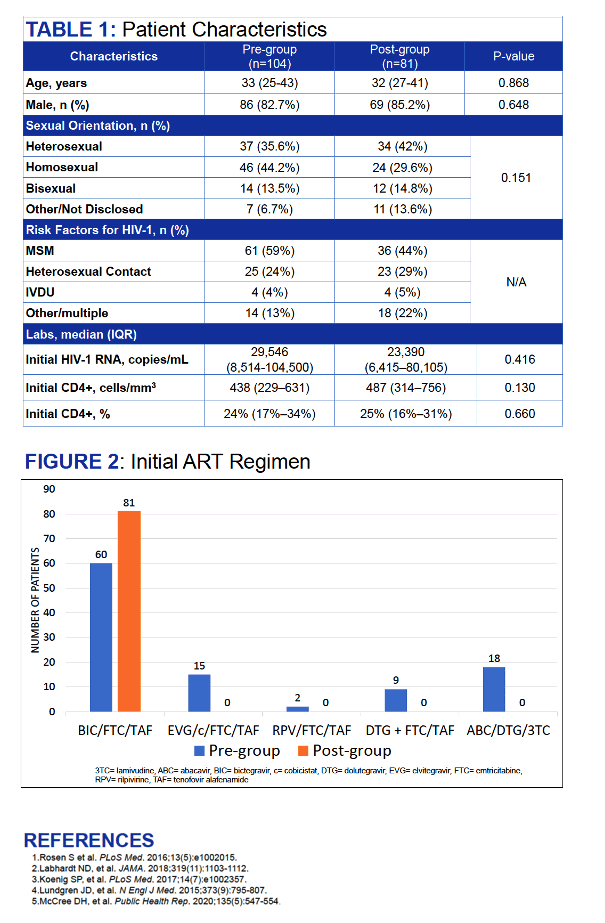 |
 |
 |
| |
Pharmacist-Driven ART Start Cuts 37 Day Off Time From HIV Diagnosis to Undetectable
|
| |
| |
IDWeek 2023, October 11-15, 2023, Boston
Mark Mascolini
Pharmacist-driven initiation of antiretroviral therapy (ART) sliced more than a month off time from HIV diagnosis to an undetectable viral load, according to a 185-person retrospective study at University of Kentucky HealthCare in Lexington [1]. The program cut time from initial visit to ART prescribing from 31 to 0 days.
Prior research cited by the University of Kentucky team found that starting ART faster lowers time to an undetectable viral load, reduces incidence of opportunistic infections, and improves retention in HIV care. In 2019 a clinical pharmacist at a University of Kentucky clinic devised a pharmacist-driven ART initiation protocol at clinic intake appointments with the aim of reducing delays in time to ART.
This retrospective study compared time from ART prescribing to an undetectable load and other outcomes in adults first seen in an initial clinic visit with a provider (from November 2017 to October 2019) versus those first seen at clinic intake by a clinical pharmacist (from November 2019 to November 2021). The analysis included antiretroviral-naive adults diagnosed with HIV for the first time. The researchers excluded people with a viral load below 40 copies at their first visit or an opportunistic infection requiring delayed ART.
The analysis included 185 newly diagnosed people-104 in the provider-clinic group and 81 in the pharmacist-intake group. Median age stood at 33 in the provider group and 32 in the pharmacist group. Respective proportions of men were 87.2% and 85.2%, of heterosexuals 44.2% and 29.6%, of bisexuals 13.5% and 14.8%, of men who have sex with men 59% and 29%, and of injection drug users 4% and 5%. Median pre-ART viral load stood at 29,546 copies in the provider-clinic group and 23,390 copies in the pharmacist-intake group. Median initial CD4 count was also similar in the two groups (438 and 487).
Everyone in the pharmacist-intake group started therapy with bictegravir/FTC/TAF, as did 60 people (58%) in the provider-clinic group. Among people first seen by a provider in the clinic, 18 began ART with abacavir/lamivudine/dolutegravir, 15 with elvitegravir/cobicistat/FTC/TAF, 9 with dolutegravir + FTC/TAF, and 2 with rilpivirine/FTC/TAF.
Among all 185 study participants, 177 (96%) reached an undetectable viral load. Large majorities in both the provider-clinic group and the pharmacist-intake group remained in care through 1 year (93% and 90%, P = 0.433).
Median days from HIV diagnosis to first visit was moderately but significantly longer in the pharmacist group (18 vs 14 days, P = 0.015). Median time from initial visit to ART prescribing measured 0 days in the pharmacist group and 31 days in the provider group (P = 0.001).
Median time from ART prescribing to an undetectable viral load was statistically similar in the pharmacist-intake group and the provider-clinic group (57 and 63 days, P = 0.518), as was median time from ART prescribing to viral load below 200 copies (43 and 49 days, P = 0.388). But the pharmacist group got from HIV diagnosis to an undetectable HIV load 31 days faster than the provider group (85 vs 122, P = 0.004).
Because pharmacist-driven ART initiation (compared with standard provider-initiated ART) significantly shortened time from HIV diagnosis to attaining an undetectable viral load without affecting retention in care, the University of Kentucky investigator suggested that "clinics with prolonged delays to ART initiation should consider utilization of a clinical pharmacist to increase access to care."
Reference
1. Griffith K, Wallace K, Stoner BJ, Burgess D, Jeter SB. Implementation of a pharmacist-driven initiation of antiretroviral therapy in patients newly diagnosed with human immunodeficiency virus. IDWeek 2023, October 11-15, Boston.




|
| |
|
 |
 |
|
|